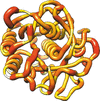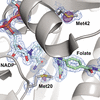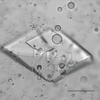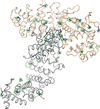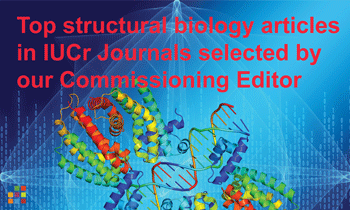issue contents
August 2022 issue

Cover illustration: Structural modeling of biological macromolecules in solution using α-SAS [Anitas (2022), Acta Cryst. D78, 1046–1063]. This image shows the construction of the α-shape of a spherical Janus particle.
CCP-EM
Open  access
access
 access
accessTime-resolved cryo-EM is an emerging technique in structural biology that allows the user to capture structural states which would otherwise be too transient for standard methods. There has been a resurgence in technical advancements in this field in the last five years and this review provides a summary of the technical highlights.
CCP4
Open  access
access
 access
accessIt is found that research mentoring of undergraduate students can result in meaningful contributions to scientific disciplines. Here, an outcome-oriented, skill-based mentoring strategy is proposed and evaluated in the context of the CASP14 community challenge.
research papers
Analysis of high-resolution data indicated that X-ray damage has little impact on conformational ensemble information from protein crystals at room temperature (277 K). In contrast, X-ray damage can alter conformational distributions obtained from cryo-cooled crystals under common experimental conditions, complicating structural interpretations in some instances. The results presented provide a strong motivation for the expanded use of room-temperature X-ray crystallography.
Download citation


Download citation


Open  access
access
 access
accessA room-temperature X-ray crystallographic method using temperature as a trigger to record movie-like structural snapshots has been developed and applied to study ligand binding and protein plasticity.
PDB references: endothiapepsin–TL00150 complex, 7qlt; 7qlu; 7qlv; 7qlw; 7qlx; 7qly; 7qlz; 7qm0; 7qm1; 7qm3; 7qm4; 7qm5; 7qm6; 7qm7; 7qm8; 7qm9; 7qma; 7qmb; 7qmc; 7qmd; 7qme; 7qmf; 7qmg; 7qmh; 7qmi; 7qmj; 7qmk; 7qml; 7qmm; 7qmn; 7qmo; 7qmp; 7qmq; 7qmr; 7qms; 7qmt; 7qmu; 7qmv; 7qmw; 7qmx; 7qmy; 7qmz; 7qn0; 7qn1; 7qn2; 7qn3; 7qn4
The structure of the full-length Drosophila cryptochrome as solved by fixed-target serial synchrotron crystallography at the Cornell High Energy Synchrotron Source is presented. Scaling and filtering methods were performed to improve the overall quality of the final model.
PDB reference: Drosophila cryptochrome, room temperature, 7ud0
Room-temperature crystallography enables researchers to resolve the conformational heterogeneity of structures. Here, the native SAD phasing of four structures at 295 K highlights the strengths of room-temperature diffraction experiments, including detailed anomalous difference maps and alternate conformations that are well supported by the electron density.
Protein crystals grown in microfluidic droplets are shown to be an effective and robust platform for storage, transport and serial crystallography data collection using a silicon fixed-target serial device with a minimal impact on diffraction quality.
Open  access
access
 access
accessAccurate electrostatic potential maps and electron-density maps of proteins are calculated based on the transferable aspherical atom model using a pseudoatom data bank and are compared with the experimental data.
Open  access
access
 access
accessMultiple approaches to data merging and scaling and anomalous substructure determination were used to solve the structure of a large asymmetric unit from weakly diffracting crystals by sulfur SAD.
Open  access
access
 access
accessDatabase-derived water probability densities around structurally and sequentially distinct DNA dinucleotide fragments reproduce the known hydration motifs, which thus can be used as building blocks to predict DNA hydration.
A new approach for simulating contrast-variation small-angle scattering experiments is presented.
Open  access
access
 access
accessThe 3 Å resolution crystal structure of the Pseudomonas aeruginosa virulence factor CbpD both supports and challenges the current model of how lytic polysaccharide monooxygenases bind chitin and raises interesting possibilities about how type 2 secretion-system substrates may interact with the secretion machinery. This structure also demonstrates the utility of new, AI-powered, protein structure-prediction algorithms in making challenging structural targets tractable.
PDB reference: CbpD, 7sqx


 journal menu
journal menu












